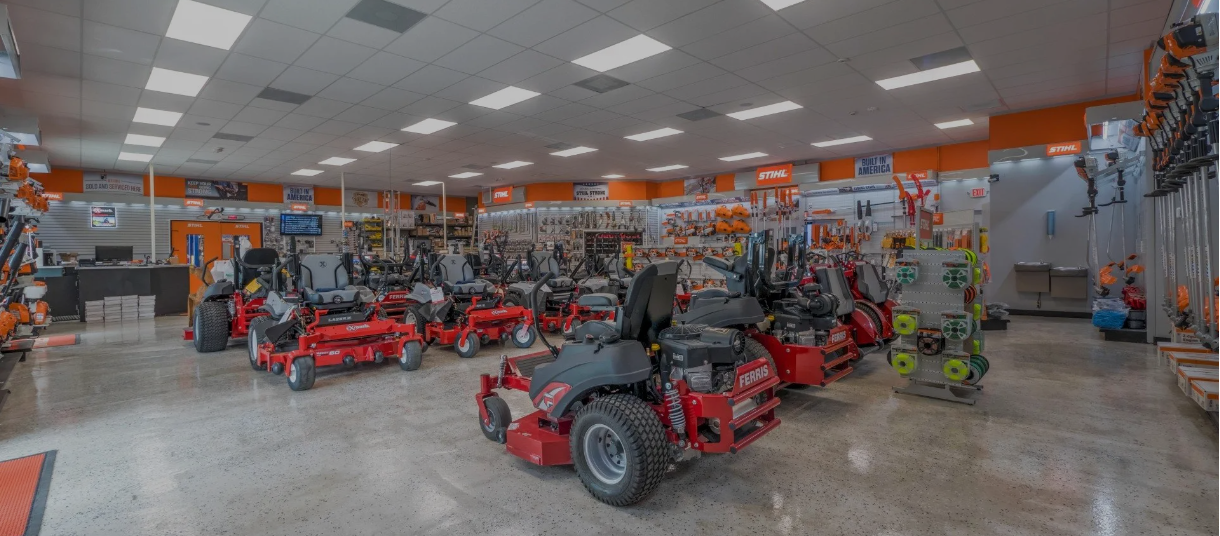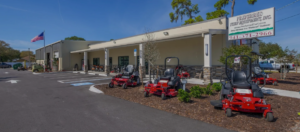How Preferred Turf Equipment Deliver Top-Notch Service by Using an Effective Tracking System
 There are a lot of factors that contribute to a dealership’s success, but top-notch customer service is the bread and butter. That’s what the folks at Preferred Turf Equipment in Sarasota, Florida, believe. In business since 1995, they’ve built a reputation for outstanding sales and service. Their motto is, “Just be nice and let’s make the people happy.” They believe that to meet customer expectations, you have to listen to the customer and see things from their perspective.
There are a lot of factors that contribute to a dealership’s success, but top-notch customer service is the bread and butter. That’s what the folks at Preferred Turf Equipment in Sarasota, Florida, believe. In business since 1995, they’ve built a reputation for outstanding sales and service. Their motto is, “Just be nice and let’s make the people happy.” They believe that to meet customer expectations, you have to listen to the customer and see things from their perspective.
But sometimes, incorrect or missing information can lead to delays, discrepancies, and customer expectations not being met. How can you make sure your customer information, work orders, and invoices are easy to find, to ensure a smooth customer experience, from sales to service to delivery?
We sat down with Clete Miller, General Manager at Preferred Turf Equipment, to learn how implementing an effective information tracking system has enabled them to deliver quality customer service.
Can you talk a little bit about your role and key responsibilities?
Clete: “I’m the General Manager, and I do a little bit of everything. I do light IT work. I also do some of the bookwork. So, whatever needs to be done that nobody else does. They call me the Garbage Man. GM – Garbage Man.”
Where did that nickname come from?
Clete: “Oh, the guys in the shop just started calling me that because I get to do the dirty work. You know, when the customers come in and complain, I’m the guy that gets that.”
What would you say is the toughest part of your job?
Clete: “The toughest part of the job is probably dealing with customers that are not happy and getting them to be happy. A lot of the time, you’re trying to decipher on both sides. You’re listening to the customer and according to them, they brought it in a day ago. But when you actually look at it, it’s been three weeks since they had it there, or three months, or whatever. So, deciphering what the truth is and then fixing it.”
How do you try to resolve those problems?
Clete: “Investigation and listening. You’ve got to find out where it started, what happened, ‘What can I do to make it right?’ A lot of the time, I let the customer make that decision. I ask them the question: ‘What will make you happy?’ and then come to an agreement with that.”

When did you implement Ideal and what was the reason for it?
Clete: “So, we were with QuickBooks since 1999, and our QuickBooks file was 4GB—just the data file. We were getting slower and slower and slower, and our equipment just didn’t run well anymore. We had several employees that transferred from other stores, that had been used to Ideal and kept saying, ‘Ideal’s the way to go. Ideal’s the way to go.’
So, I did some research. Then in 2017, we decided to make the switch to Ideal, getting rid of QuickBooks. And we made a switch with the general ledger and everything. We’re happy we did it. It’s a much better system and a much better way to keep track of your inventory, much better way of invoicing. Work orders are much better to be able to keep track of, time on those work orders. It’s a good system for that, for sure.”
What are some must-haves when it comes to a system like Ideal?
Clete: “Ease of use is probably the number one thing—customer-friendly, employee-friendly. Inventory adjustments are easy. Inventory control is easy. I think Ideal has all that. It’s a good system.”
Which function of Ideal helps you the most?
Clete: “Day-to-day, being able to reverse invoices and other stuff that has been entered wrong. If we didn’t have that, it would be a big, big deal in the Bookkeeping department. Also, the ease of invoicing–that’s huge. The ease of looking up parts and seeing exactly what you have on hand and that kind of thing—it just makes it quick. On the Home screen, you get a toolbar across the top and your stuff is there. You just click it and it takes you to the right screen.”
How has Ideal impacted the overall success of your dealership?
 Clete: “In the last year and a half, now that we’ve been on the system, it’s contributed in a big way. Keeping track of work orders and the tech’s time on a specific machine or a product, and then being able to look at your day-to-day percentages and set pricing. It’s a huge .”
Clete: “In the last year and a half, now that we’ve been on the system, it’s contributed in a big way. Keeping track of work orders and the tech’s time on a specific machine or a product, and then being able to look at your day-to-day percentages and set pricing. It’s a huge .”

